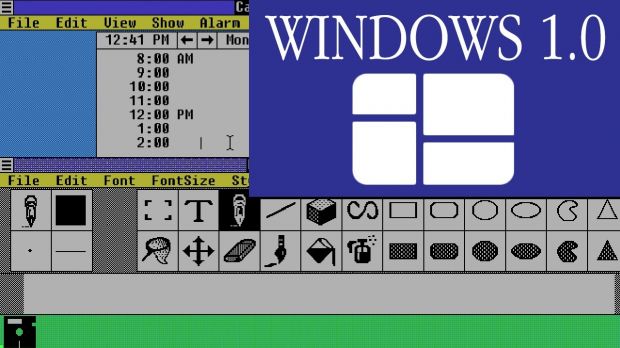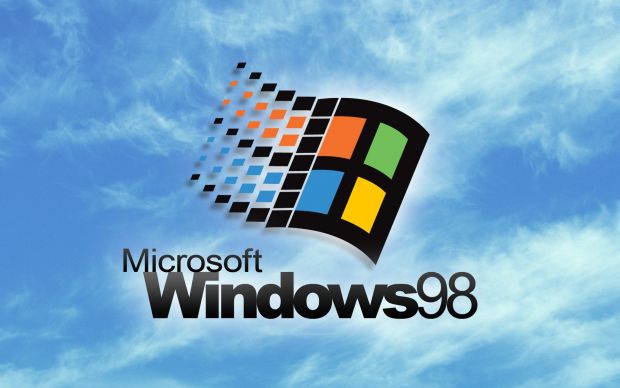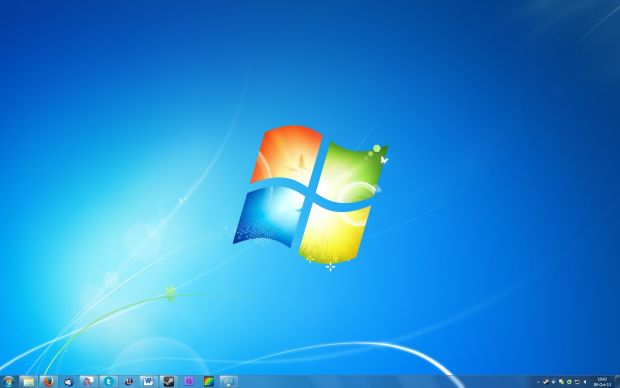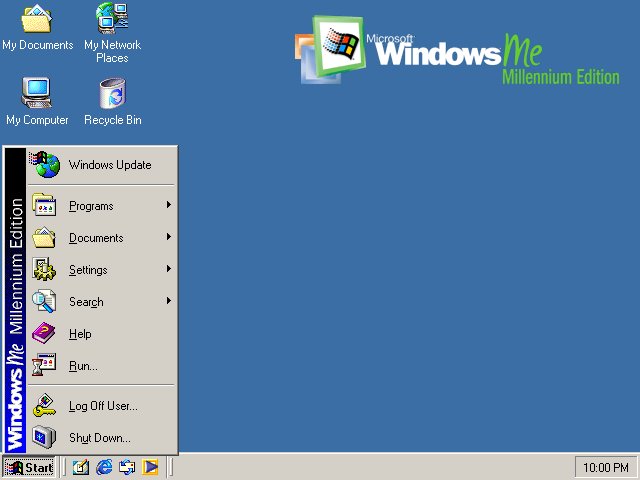Skip to comments.
Microsoft Windows Turns 29: Happy Birthday to the World's Number 1 OS! [Love it or hate it]
Softpedia ^
| 11/21/2014
Posted on 11/21/2014 1:41:49 PM PST by SeekAndFind
Windows 1.0 was launched 29 years ago

24 photosVIEW ALL
Windows was, is, and will continue to be the world's number one operating system for the desktop for many years from now, as neither Mac OS X nor Linux have what they need to overtake Microsoft's key player in the PC war. But have you ever wondered how everything actually started? Today is the best moment to ask such a question, because this is the day when Microsoft's Windows celebrates its 29th anniversary.
While we're not going to get through the whole Windows history, because both Microsoft's official website and Wikipedia have an overwhelming amount of information on this, we're still going to briefly describe each Windows version that got to see daylight in the last 29 years and see what's to come for the desktop platform.
Windows 1.0
29 years ago today, Microsoft officially introduced Windows 1.0, its very first operating system that came with a graphical interface for users. It was based on the same MS-DOS system, but users no longer had to type commands, but to simply move a mouse on the screen and click on what Microsoft at that time called windows. Windows 1.0 shipped two years after the public announcement, as Microsoft wasn't yet a mature company at that moment and development took more than expected.
Windows 1.0 came with many of the elements we can find right now in the operating system, including windows, menus, scroll bars, icons, and dialogs that allowed you to interact with the software solution itself. Available apps included Notepad, Paint, Calculator, Writer, and Reversi, the very first game included in Windows.
Windows 1.0 requirements: 256 KB of storage space, two double-sided floppy disk drives, graphics adapter card, and up to 512 KB of space to run apps.Windows 2.0, 3.0, and 3.1
The following three releases were mostly a struggle for improvements, rather than bringing something entirely new to the market. Microsoft used the basic Windows 1.0 to create an operating system that was capable of performing a lot more tasks, as despite its revolutionary concept, the original project was still limited in functionality.
Windows 2.0 was officially introduced in December 1987 and came with changes in terms of user interface and memory management, but nothing too surprising. More keyboard shortcuts and expanded memory support were integrated into this release.
Windows 3.0 was brought to life in 1990 and introduced essential improvements, such as a revised user interface and significant performance enhancements thanks to apps that were able to run in protected mode. All these updates also led to record sales for the new OS, with stats pointing to 2 million sold copies in just six months after launch.
Windows 3.1 was officially introduced in March 1992 and was mostly focused on visual improvements, again experiencing very good sales.Windows 95 and Windows 98
Windows 95 was the first OS version whose core design is still being used today, with traditional elements such as the taskbar, Windows Explorer/File Explorer, and Internet Explorer still part of Microsoft's latest releases.
Windows 95 was officially introduced in August 1995 and brought support for 32-bit applications, thus setting the foundation for the software industry that skyrocketed in the last 19 years.
Unsurprisingly, Windows 95 was the best-selling product for Microsoft at the time of its launch and its success was easily continued by its successor, Windows 98.
Windwos 98 wallpaper

In June 1998, Microsoft decided to introduce Windows 98 with several major improvements, including Internet Explorer 4, hibernation, support for multi-monitor configurations, and support for USB and ACPI. Windows 98 Second Edition pushed all these improvements to new levels, adding applications such as Windows Media Player and Internet Explorer 5, both of which were among the catalysts of Windows' rapid growth.
Windows Millennium Edition (also known as Windows ME) was released in September 2000, and just like Windows 2000, brought visual improvements and important enhancements in terms of performance. Both booted really fast and revamped the multimedia side of the operating system, adding Windows Media Player 7 and Windows Movie Maker as key elements to the app lineup.Windows XP
Still in use today by around 17 percent of the world's desktop computers, Windows XP was one of the most successful OS versions launched by Microsoft. Released in October 2001, Windows XP came in several SKUs, namely Home, Professional, and Media Center, each with different sets of apps aimed at specific user categories.
Windows XP included apps such as Internet Explorer 6 and a new Windows Media Player version, while also boasting a completely new look that made the operating system itself a lot more appealing for PC users.
Windows XP support ended in April 2014 and caused quite a lot of problems for Microsoft because of its shockingly big market share at that time, as users refused to upgrade to a newer OS because of the low spec requirements of XP and its excellent reliability. Security, however, was a main concern, as XP wasn't capable of protecting user data from modern threats.
Windows XP also had a server brother intuitively called Windows Server 2003, whose support ends in July 2015.Windows Vista
One of the biggest fails in Microsoft's history, Windows Vista was officially launched on November 30, 2006, after many months of delays and revisions to the original build. Windows Vista came with quite a plethora of new features, including a redesigned user interface and many security improvements, but disappointed in terms of performance.
Windows Vista was the first OS version to come with the Aero visual effects, while also boasting the new Windows Search, new multimedia tools, a revamped network system, and better audio features.
Developing Windows Vista took around 5 years to complete, so many claimed that the new OS version came too late after Windows XP. It attracted criticism due to many important changes, including its hardware requirements that forced companies and users to upgrade their systems.
Windows Vista system requirements (for Vista Premium Ready experience): 1 GHz processor, 1 GB of RAM, 128 MB graphics card, 80 GB of storage space.Windows 7
Microsoft tried to repair the Vista disaster with Windows 7, an operating system that fixed many of the annoyances found in the previous operating system and bringing several improvements in terms of performance and appearance.
Windows 7 was again available in several versions, including Home and Professional, and featured multi-touch support, new visual effects with some changes here and there, networking tweaks, and better security.
Windows 7 is currently the world's number one operating system on the desktop and powers more than 50 percent of the world's PCs. Support for Windows 7 will end in January 2020.
Windows 7 desktop

Windows 8
Launched with much fanfare in October 2012, Windows 8 brought a dramatic change in approach for Microsoft and its users, putting the focus much more on touch features than on the desktop.
Just as expected, adoption of Windows 8 was heavily impacted in the first months after launch, mostly because of the confusion created by the introduction of the so-called “Modern” interface. Videos showing users trying to get around the operating system rapidly spread spreading all over the web, while analysts and experts criticized Microsoft for its increased focus on touch.
Windows 8.1 and Windows 8.1 Update were launched in October 2013 and April 2014, respectively, and were supposed to improve the experiences users had with the modern operating system. The Start button was brought back, but still without a Start menu, while the Metro UI received more features to make it appropriate for use with a mouse and keyboard.Windows 10
Part of Microsoft's reconciliation with users after the Windows 8 flop, Windows 10 was first announced on September 30 and released to users as a preview build in early October 2014.
Windows 10 brings back the Start menu and puts more focus on feedback, with Microsoft asking users for help and suggestions on how to improve the operating system. The company focused a lot more on the desktop and also implemented features such as multiple desktops, while also adding new visual effects and borderless windows.
Windows 10 is projected to be released in April 2015, but Microsoft is yet to confirm the launch date for this particular OS version.
TOPICS: Business/Economy; Computers/Internet; History
KEYWORDS: microsoft; operatingsystems; windows
Navigation: use the links below to view more comments.
first 1-20, 21-40, 41-59 next last
To: SeekAndFind
How much do YOU think this advanced operating environment is worth? WAIT just one minute before you answer...
Sorry, I couldn’t resist. Gotta love Steve Ballmer.
2
posted on
11/21/2014 1:44:11 PM PST
by
Cato in PA
(Resist!)
To: SeekAndFind
My office was recently forced to upgrade to Windows 7 due to MS no longer supporting XP. Ugh, one problem after another. I was basically unable to work for about two hours this morning while IT once again had to troubleshoot.
3
posted on
11/21/2014 1:44:13 PM PST
by
jalisco555
("My 80% friend is not my 20% enemy" - Ronald Reagan)
To: SeekAndFind

More love for Window ME than I would give.
To: jalisco555
Be thankful they gave you 7. lol
5
posted on
11/21/2014 1:45:50 PM PST
by
DonaldC
(A nation cannot stand in the absence of religious principle.)
To: Cato in PA
I'm not sure if I miss this...

6
posted on
11/21/2014 1:46:38 PM PST
by
SeekAndFind
(If at first you don't succeed, put it out for beta test.)
To: jalisco555
I loved XP. Actually, I enjoyed all versions except VISTA. VISTA was garbage.
To: SeekAndFind
I have XP, win7, win8.1, MacOSX and Linux Mint.
Linux Mint blows them all away, running on half the computer power. i.e. single processor vs dual. Linux wins!
Sent from my Linux Mint computer.
8
posted on
11/21/2014 1:49:15 PM PST
by
bicyclerepair
(Ft. Lauderdale FL (zombie land). TERM LIMITS ... TERM LIMITS)
To: SeekAndFind
LOL. That's hilarious.
To: bicyclerepair
RE: Linux Mint blows them all away, running on half the computer power. i.e. single processor vs dual. Linux wins!
So, how can they make this more popular and capture market share from the hated death star — Microsoft?
10
posted on
11/21/2014 1:54:42 PM PST
by
SeekAndFind
(If at first you don't succeed, put it out for beta test.)
To: SeekAndFind
11
posted on
11/21/2014 1:56:34 PM PST
by
JaguarXKE
(1973: Reporters investigate All the President's Men. 2013: Reporters ARE all the President's men d)
To: SeekAndFind
29 years ago today I was selling VHS machines at a mall where my co-worker was taking COBOL classes. Had no idea what we were about to be in for.
To: JaguarXKE
RE: Is that OS or POS?
Both, depending on which OS you are a fan of.
13
posted on
11/21/2014 2:02:21 PM PST
by
SeekAndFind
(If at first you don't succeed, put it out for beta test.)
To: SeekAndFind
Linux Mint support ends in 2019. Mint is supposedly the Linux OS that most closely resembles XP. It’s polished and FAST as H3LL.
Running a single 64bit AMD Athlon with only 2gb of ram, this system boots in 13 seconds. Firefox takes one-one-thousand (speaking) to open.
On a dual proc 64bit win pc, the above takes forever. I can’t tell you how much better Linux Mint is over any win OS. And I’ve used them all includine vista (UGH).
Imagine if I had equal hardware running Linux. It would probably be a blur.
Some people are afraid of computers. So I don’t think Linux’s DIY reputation will catch on with the majority of the population. I love it though. I was so sick and tired of waiting for windows. Everything, wait wait wait. And I keep my systems well maintained. With Linux, there’s no waiting. You click on something and it happens.
14
posted on
11/21/2014 2:04:10 PM PST
by
bicyclerepair
(Ft. Lauderdale FL (zombie land). TERM LIMITS ... TERM LIMITS)
To: SeekAndFind
They neglected to mention Windows NotThere & Windows good4.0, two precursors of Windows XP ;)
15
posted on
11/21/2014 2:07:26 PM PST
by
mikrofon
(exIT Bump)
To: SeekAndFind
Microsoft’s strategy of making Windows backward compatible with older programs and compatible with virtually all PCs made it into the world’s most popular OS — while also burdening it with lots of code that is unnecessary for most users. And as any engineer will tell you, unnecessary complexity increases the chances for failure and breakdown. In sum, Windows’ faults are bound up with its virtues.
To: SeekAndFind
17
posted on
11/21/2014 2:08:41 PM PST
by
W.
(We won. Get over it! Or not--I don't care--because we won!)
To: W.
Hey, I still remember Dos and Lotus 123
18
posted on
11/21/2014 2:10:34 PM PST
by
greeneyes
(Moderation in defense of your country is NO virtue. Le//t Freedom Ring.)
To: fatnotlazy
I have a business where we use xp and xp versions of Adobe Indesign once a month. The last thing i want to do is upgrade to anything else because I only use the heavy duty programs once a month, but I’ll tell ya, xp and indesign have become slower and less cooperative every month.
19
posted on
11/21/2014 2:13:11 PM PST
by
duckworth
(Perhaps instant karma's going to get you. Perhaps not.)
To: SeekAndFind
With a Large Hat Tip to Dr. Ed Roberts— the Father of the personal computer. Dr. Roberts was the first employer of Bill Gates and Paul Allen— allowing their development of BASIC... the first product of Microsoft, developed while employees of Dr. Roberts— and for which they did not pay him near enough to take with them. That’s a fact folks. And the suckers knew it, too.
Ed Roberts was an AirForce crytographer, graduate electrical engineer and realized the dream of his life— he studied medicine and graduated medical school and practiced family medicine in rural Cochran, GA. He died in Macon GA hospital and guess who flew in separately to see him in their private jets.... Gates and Allen.
So the REAL story is Dr. Ed Roberts, an American hero and genius.
20
posted on
11/21/2014 2:13:48 PM PST
by
John S Mosby
(Sic Semper Tyrannis)
Navigation: use the links below to view more comments.
first 1-20, 21-40, 41-59 next last
Disclaimer:
Opinions posted on Free Republic are those of the individual
posters and do not necessarily represent the opinion of Free Republic or its
management. All materials posted herein are protected by copyright law and the
exemption for fair use of copyrighted works.
FreeRepublic.com is powered by software copyright 2000-2008 John Robinson


